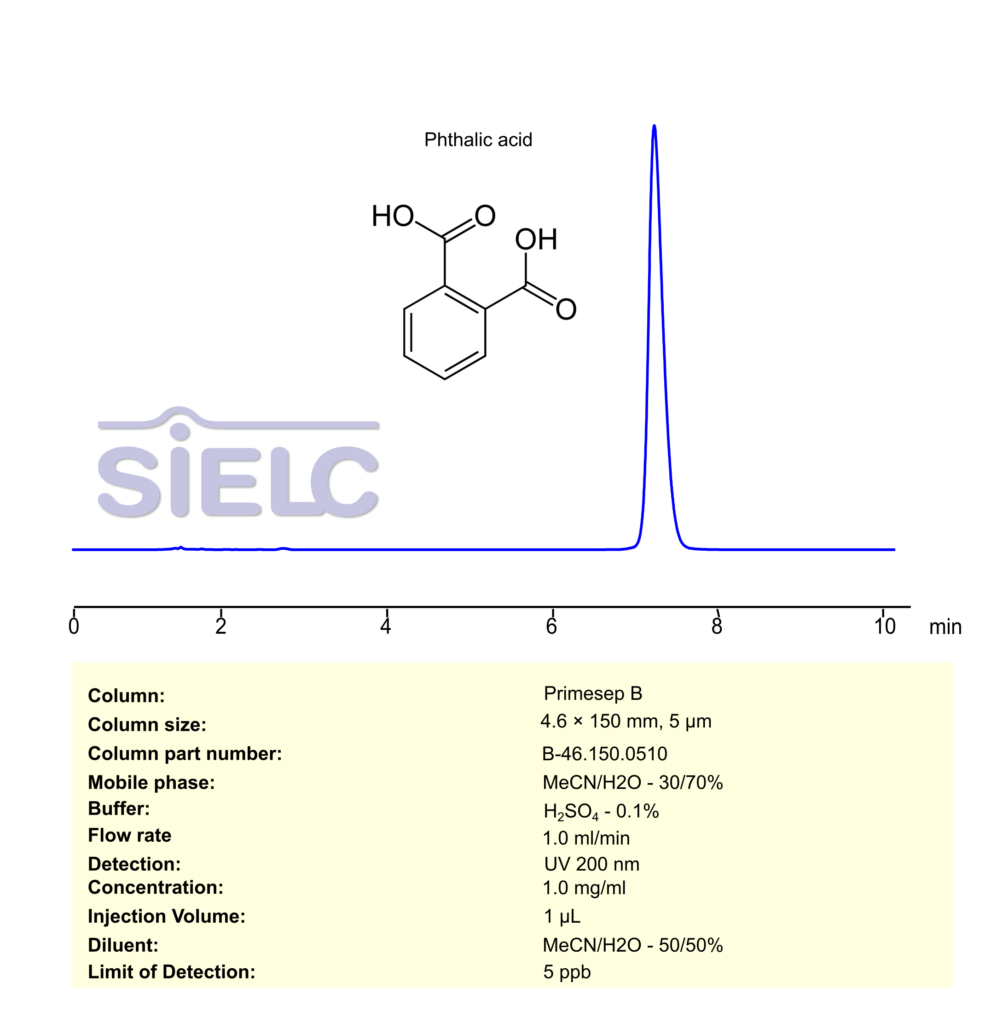High Performance Liquid Chromatography (HPLC) Method for Analysis of Phthalic Acid on Primesep B by SIELC Technologies
Separation type: Liquid Chromatography Mixed-mode SIELC Technologies

High Performance Liquid Chromatography (HPLC) Method for Analysis of Phthalic Acid
Phthalic acid is an aromatic dicarboxylic acid with the chemical formula C₆H₄(CO₂H)₂. It consists of a benzene ring with two carboxylic acid groups (-COOH) attached to adjacent carbon atoms (in the ortho position). It is mainly produced by the oxidation of naphthalene or o-xylene.
Uses
Phthalic acid is primarily used as a precursor to other chemicals, including:
Phthalic anhydride: Used in the production of plasticizers for PVC (polyvinyl chloride).
Alkyd resins: Important in the manufacture of paints and coatings.
Dyes and pigments: Phthalic acid derivatives are often used in the production of dyes.
Phthalic Acid can be retained, separated and analyzed using a Primesep B mixed-mode stationary phase column. The analysis employs a gradient method with a simple mobile phase comprising water, acetonitrile (MeCN), and phosphoric acid as a buffer. This method allows for detection using UV 200 nm.
You can find detailed UV spectra of Phthalic Acid and information about its various lambda maxima by visiting the following link.
| Column | Primesep B, 4.6 x 150 mm, 5 µm, 100 A, dual ended |
| Mobile Phase | MeCN/H2O – 30/70% |
| Buffer | H2SO4 – 0.1% |
| Flow Rate | 1.0 ml/min |
| Detection | UV 200 nm |
| Limit of Detection | 5 ppb |
| Class of Compounds | Acid |
| Analyzing Compounds | Phthalic Acid |
Application Column
Primesep B
Column Diameter: 4.6 mm
Column Length: 150 mm
Particle Size: 5 µm
Pore Size: 100 A
Column options: dual ended





